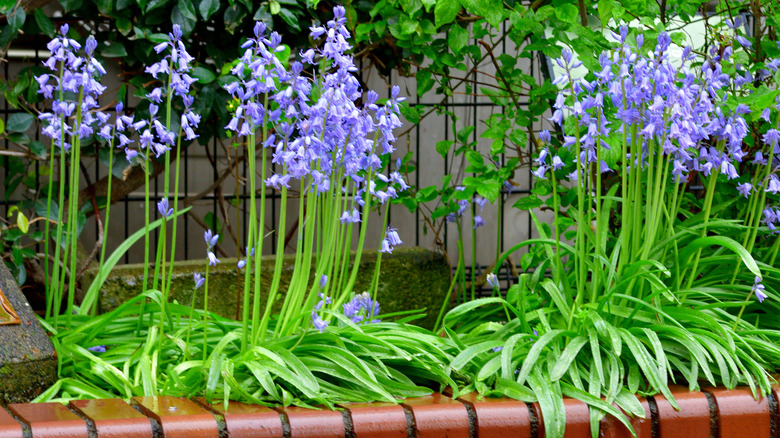Why You Should Avoid Planting This Beautiful Flower In Your Garden
Bluebells have a way of charming us. They seem to dance in the breeze, brighten up shady corners, and announce the coming of spring with an almost magical cheer. In fact, bluebells are perfect for gardeners who want to jump-start their landscaping early in the year and keep the blooms coming into autumn. But lurking among these garden darlings is one flower that isn't as innocent as it looks — the Spanish bluebell (Hyacinthoides hispanica), also known as wood hyacinth.
Native to Spain, Portugal, and Northwestern Africa, Spanish bluebells might look innocent with their violet-blue blooms and elegant upright stems. However, they are stunning flowers you'll immediately regret growing. These bulbs spread aggressively by seeds and offsets, quickly taking over flower beds and even invading surrounding natural areas. These plants can be invasive in regions like Virginia, New York, New Jersey, Georgia, and maybe even Delaware. Further, Spanish bluebells are toxic to humans and pets, if ingested.
While bluebells are generally a gardener's dream, it's essential to know the difference between native and invasive bluebell flowers. So, here's how to tell the difference. Spanish bluebells have broader leaves, upright stems, and flowers that cluster all around the stalk, unlike native bluebells' elegant droop. When planning your garden, be sure to avoid planting this troublemaker to protect both your yard and your local ecosystem.
Spanish bluebells are invasive flowers
It's best to avoid planting Spanish bluebells. The truth is, Spanish bluebells thrive a little too well. Once established, they form dense clumps that can potentially suffocate other plants. Over time, they begin to overpower more delicate flowers and ground covers, stealing precious light, space, and nutrients. Their vigorous nature makes them stronger than many native plants, and allows them to spread relentlessly and take over entire areas. This reduces the variety in your garden and also threatens the balance of local plant life, making it harder for native species to survive and flourish.
Spanish bluebells can also readily crossbreed with native bluebell species. This could put rare local varieties at risk and diminish valuable nectar sources for pollinators. As they spread, they can reduce the diversity of plants in your garden, leaving fewer resources for birds, bees, and butterflies that depend on a mix of spring flowers. Over time, this can turn a once-thriving space into a bland, uniform patch lacking life and color.
If you love the dreamy look of Spanish bluebells, there are plenty of beautiful, non-invasive blue flowers you can grow in your garden. Virginia bluebells (Mertensia virginica) have a soft, woodland charm and are a great source of early nectar. Lungwort (Pulmonaria officinalis) offers delicate clusters of blue and pink along with striking speckled foliage. These friendly options can help create a gorgeous spring garden while keeping it safe and inviting for both plants and pollinators.

